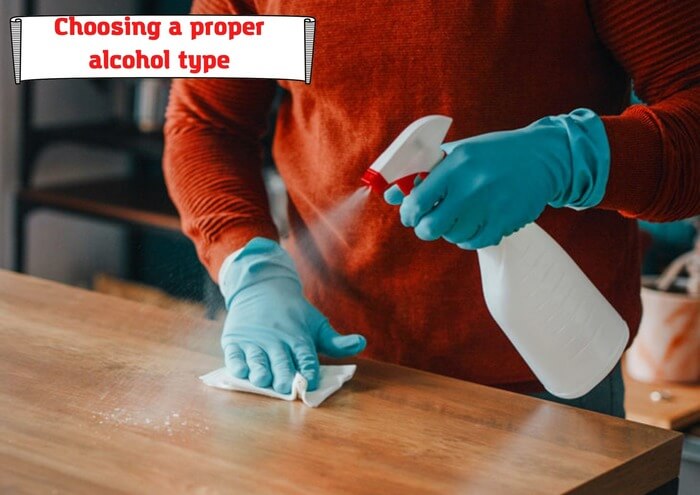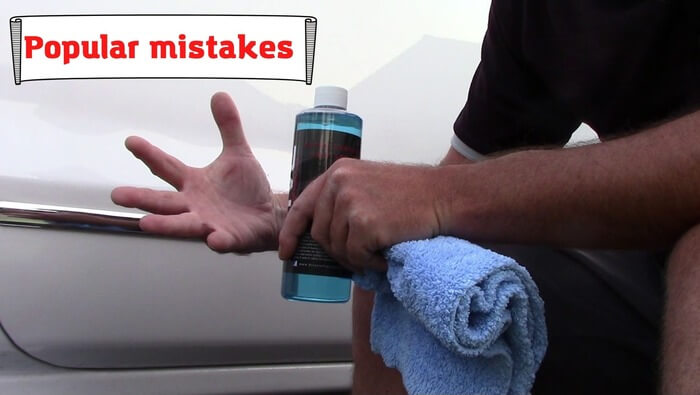
Preparation for painting is a really hard thing for beginners. And while professionals make it automatically without even thinking about the products they use, beginners may be caught using all those insane tips from the internet. Today we are going to discuss whether you should use alcohol to clean the surface before painting.
The question is not only whether you need to use it but what kind of alcohol you have to choose. Painting prep may take you a lot of time and sometimes money. But in the end, you will get a smoothly painted thing instead of a surface covered with paint runs. Make sure you stick to the tips and secrets you will find in our today’s article.
Here, we’ll discuss such things:
- Why is it so important to clean the surface before painting?
- What kinds of alcohol should you use for preparation?
- Painting wood and metal – is there any difference in prepping?
- Can alcohol harm paint, primer, or other materials?
- Very common mistakes when cleaning the surface with alcohol before painting.
Let’s get started!
Why cleaning before painting is important?
We tend to paint a car or a woodcraft project not in a single day. You may prepare your surface, use fillers, primers, and other products. For wood, we may use some protection oils before painting. But when we take our spray gun and come to the project, we may see that there are some fingerprints, dust, grease, and other contaminants that may ruin your job.
In all cases, before applying any coats of your paint, you should prepare the surface to clean it all off. And here, alcohol is one of the best helpers. Here’s what it actually does:
- it removes remains of oils that you may not even see on the surface;
- it removes the parts of filler you used for leveling your surface;
- it removes dust and other small contaminants that may be hard to remove with other methods;
- it removes grease which is extremely important because the paint won’t stick to the greasy surface;
- it removes dirt that might have built up on your project since you last touched it.
As you see, the importance of alcohol cleaning is hard to overestimate. It’s really needed for preparing any surface before painting. If you have some grease left on your metal or wooden part before you apply paint, the grease will be covered by paint and the paint won’t be able to cure completely. In a month or two this spot will just flake off. What’s more, this spot will cause paint runs immediately after you spray some paint onto it. So, to achieve a smoothly painted surface, you better clean your project with alcohol before applying paint. But your whiskey isn’t going to work!
Choosing a proper alcohol type for paint prep

Professionals know well that it’s better to spend some money and buy a special product that is designed for paint prep. We won’t tell you about brands or certain products because you will immediately think that this is an ad. Dozens of companies produce specially diluted and prepared products for this purpose and this is obviously the best way for both, experts and beginners.
Let us quickly explain why. For using alcohol as a paint prep material, you will need to dilute it properly. Bad diluting will result in poor chemical reactions and whether too strong or too weak effect. So you will need to know which dilution percentage is optimal in your case which is not that simple to find out. Even if you know the percentage, diluting isopropyl alcohol isn’t that simple.
So, apparently, you can use isopropyl or rubbing alcohol for this purpose. One thing you should remember is that no drinking alcohol is OK for paint preparation. If you use your favorite scotch or vodka, you won’t get the optimal results. Instead, your surface may become even more sticky and greasy because of different additional components that are found in drinking alcohol. So better save your whiskey for the celebration of a beautifully painted project.
We would recommend specially prepared rubbing alcohol for this. It’s pure, clean, and it’s meant for this purpose.
How to clean wood and metal with alcohol?
Well, cleaning bare wood with alcohol is not a very good idea. You should apply some oils or primers that are appropriate for your type of wood. If you use alcohol, you can damage the wood grains and will only make it worse for the paint to cure. But when you have some primer on your wood, cleaning with alcohol before painting is a good choice. In this case, your acrylic or nitro paint will stick better and will be smooth enough for finishing your project.
When you paint metal parts, things are a little more complicated. Metal attracts contaminants and it needs to be cleaned properly at all stages, starting from bare metal before applying primers, and finishing with topcoats. Make sure you clean the grease off the surfaces before applying any new coat of paint. If you don’t do it, the grease and other contaminants will ensure that your project looks really bad after you finish your job.
In other words, alcohol is much more important when you paint metal parts. But before you apply it, make sure that alcohol doesn’t get to plastic parts of your project or to any other materials. Because it can lead to discoloration and other problems.
How can alcohol harm your paint or primer?
Although rubbing alcohol is prepared specially for paint prep job, it should be applied according to instructions. Precautions should be taken because otherwise, you will need to redo the whole job which will take you much time, money, and effort.
Here are some cases when alcohol can damage paint or primers:
- Mineral oils or any other stains on wood. If you have some oils or stains, you better keep that alcohol away from your project. It can harm the surface even if the material has completely cured and dried.
- Any materials that can be dissolved in alcohol. You should read instructions on any products that you use for painting. If the instruction says that you shouldn’t use alcohol for cleaning, just stick to it.
- Some fillers. We know some kinds of fillers that can be damaged by alcohol. Again, you should read the instructions to learn this. Otherwise, alcohol will just destroy all the work you have done before.
- Bare wood. It’s not appropriate to apply alcohol on bare wood. If you need to clean it before applying any primers or whatever, just use some cloth to wipe it or buy specially designed products in a paint shop.
As you see, problems may occur. But if you read the instructions and stick to simple rules, you will be able to paint your project safely and without any need to redo the job.
Popular mistakes in using alcohol as paint prep

We decided to tell you about the most common mistakes that occur when cleaning surfaces with alcohol before painting. We hope you won’t make these mistakes in your future projects and will be able to paint with no problems.
Here are some troubles we’ve found:
- Too much alcohol. Just as a human will feel bad with too much alcohol inside, the surface for painting doesn’t need overdosing. Once you wipe a sponge with alcohol over the surface, it should be clean and dry in a couple of seconds.
- Too little alcohol. If your sponge is dry, you will just gather some dust on it without actually cleaning the surface. This will be a problem if you want some good results after painting.
- Bad alcohol. We’ve told you before – only use rubbing alcohol that is prepared for your surface. Avoid using any other types of alcohol or diluting 100% alcohol by yourself.
- Dirty sponge. When you are cleaning off grease and dust with alcohol, make sure you change the sponge after it looks dirty. Otherwise, contaminants will never be cleaned properly.
- Using inappropriate sponge or cloth. The material you use for wiping the surface with alcohol should be tough enough to not leave any fiber parts on your project.
- No time for drying. Although the surface may look dry right after you apply some alcohol, you should give it some time to dry completely. Usually, 30 minutes will be enough. If the surface doesn’t dry properly, the paint will not cover it smoothly.
These are probably the most popular mistakes every beginner may make. We’ve checked it up on specialized forums on the internet, and we now know that even experienced woodworkers and car paint specialists sometimes make these mistakes and need to spend their time and money repainting their projects.
Final words
If you are about to paint something, always check the requirements your paint has written on a can. Remember that no kind of paint can be applied smoothly on a surface that is greasy and dirty. If you even try doing this, the paint will peel off and chip off just after some weeks or months. So if you want your project to be beautiful in a long run, just clean that grease with alcohol.
It also helps with avoiding those annoying paint runs. If you don’t prepare the surface properly, you aren’t likely to get a decent result. So keep an eye on recommendations and always use any products according to their original purpose. This is the key to success in painting any surface.
- Can You Unmix Paint: Techniques, Consequences, Alternatives - February 23, 2024
- Does Primer Need to be Mixed? Effective Primer Application - February 22, 2024
- How to Make Old Paint Usable Again: Retrieving and Preserving Paint - February 21, 2024



